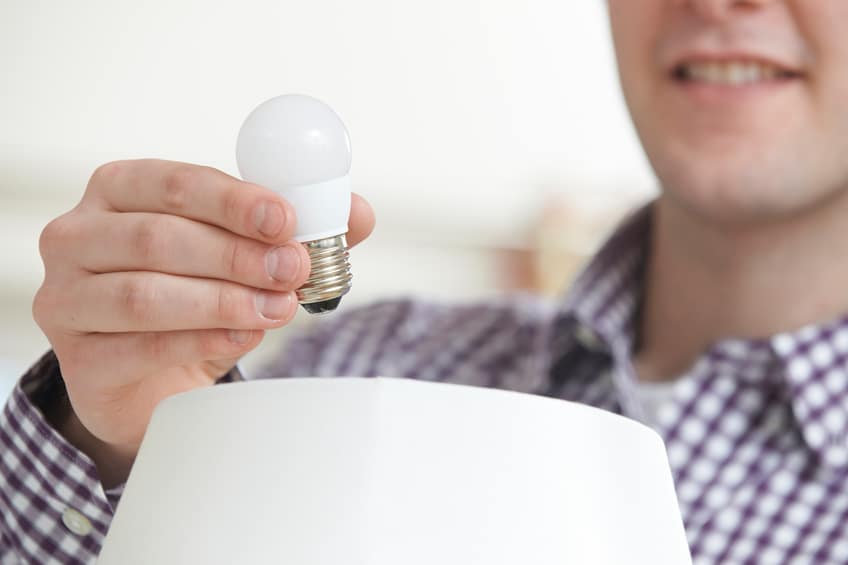When science introduced LED lighting to the world, energy experts and the public were ecstatic.
LEDs (light emitting diodes) use one-tenth the electricity of regular incandescent bulbs and half the power of fluorescents. They last for decades before burning out. And over the life of a single bulb, they save consumers $100.1
Governments quickly embraced the new technology. LEDs are now in wide use for street and outdoor public lighting. Today, nearly 13% of outdoor lighting across America is LED.2
But there’s a problem. There’s increasing evidence LEDs harm your health. The American Medical Association (AMA) recently issued a strong warning. The physicians’ group cautioned that LEDs emit blue light that causes insomnia and increases the risk of cancer, heart disease, diabetes, and obesity.3
LED lighting even damages plants. The AMA says it affects the growth of trees and other vegetation. Mario Motto is coauthor of the AMA report. He is past president of the Massachusetts Medical Society. “These lights aren’t just bad for us, they’re bad for the environment,” he said.
Blue light has a far greater impact on your body than other parts of the light spectrum. When you are exposed at night, it disrupts your natural circadian rhythm. It depresses your production of melatonin, your body’s sleep-promoting hormone. Over time, this can have a disastrous effect on your health, experts say.
Researcher Michael Siminovitch is director of the California Lighting Technology Center at the University of California at Davis. He has extensively studied LED lighting. Blue light “really negatively impacts people’s physiological well-being,” he said.4
Recommended for You: Are YOU Infected? [See the Photos]
Up to 223 million Americans already have this insidious bug living inside of them. Men, women, children, seniors. Most have no idea. And they certainly don’t know that some experts are now saying that this common, but little-known, bug is a leading cause of cancer. A recent review in Critical Reviews in Microbiology confirms that it “is capable of promoting cancer by several mechanisms.”
Go HERE to find out if you’re harboring this secret cancer bomb.
And it doesn’t matter if you are exposed to LEDs outdoors or inside your home. Indoor LED lights, smartphones, computer screens, e-readers, and tablets all emit blue light.
A recent Harvard Medical School study found that using a tablet e-reader not only affects how long it takes you to fall asleep, but leads to poor-quality sleep. Tablet users woke up groggy the next morning.
The researchers pointed out that chronic suppression of melatonin and sleep deficiency are linked to a myriad of serious health problems. They include heart disease, diabetes, and obesity. Not to mention breast, colorectal, and prostate cancers.5
Dr. Charles Czeisler is director of the Division of Sleep Medicine at Harvard Medical School. “What we showed is that reading from light-emitting e-reader devices has profound biological effects,” he said.
Limit Your LED Risk
LEDs are everywhere. It’s almost impossible to avoid them entirely. But there are simple steps you can take to limit your risk.6
- Secure your bedroom. Make sure there are no LED lights in your bedroom. It also makes sense to limit LED lights in other rooms you frequent just before bedtime.
- Enforce a screen curfew. Stop using computers, tablets, smartphones, TVs, or other LED devices within two hours of bedtime.
- Use a filter. If you must answer email or do other tasks involving an LED screen at night, use a blue light screen filter. These filters are available at electronics stores and they shield you from the blue, sleep-destroying low-end of the light spectrum.
- Use an anti-blue light app. They are available for both Apple and Android devices. These apps automatically reduce blue light from your device after the sun goes down. One of the most popular is called f.lux. You can download it here.
- Back off. Keep the screen at least 14 inches from your face.
There’s one other thing you can do. As the health dangers of LEDs become more evident, some cities are fighting back. Encourage public officials in your community not to use high-intensity LEDs for outdoor lighting.
Due to public complaints, New York City has already begun switching street lights to a lower-intensity version of LEDs with less blue light. The cities of Gloucester, Mass., and Lake Worth, Fla., recently rejected blue light LEDs for public areas.
In Good Health,

Angela Salerno
Executive Director, INH Health Watch
Like this Article? Forward this article here or Share on Facebook.
References:
1http://appliancecalculator.stanford.edu/?gclid=CIO3oq2yrc8CFYpbhgodUD4GSA#/lighting3?goto=0
2http://www.ama-assn.org/ama/pub/news/news/2016/2016-06-14-community-guidance-street-lighting.page
3https://www.washingtonpost.com/national/health-science/some-cities-are-taking-another-look-at-led-lighting-after-ama-warning/2016/09/21/98779568-7c3d-11e6-bd86-b7bbd53d2b5d_story.html
4https://www.washingtonpost.com/national/health-science/some-cities-are-taking-another-look-at-led-lighting-after-ama-warning/2016/09/21/98779568-7c3d-11e6-bd86-b7bbd53d2b5d_story.html
5http://phys.org/news/2016-06-ama-affirms-human-health-impacts.html
6http://www.institutefornaturalhealing.com/2016/05/harvard-study-never-do-this-in-bed/

